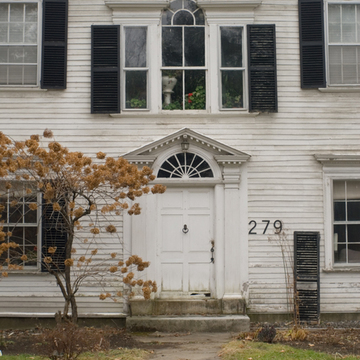This house has some of the most elaborate Federal detail to be found in Chelsea village. Named the seat of Orange County in 1795 and located astride two roads, including the Norwich to Chelsea turnpike that ran northwest from the Connecticut River Valley, the village prospered in the first decades of the nineteenth century as a regional commercial, agricultural, and small manufacturing center. Subsequently bypassed by the railroad, it largely froze in time, preserving an extensive body of high-quality Federal and Greek Revival public, commercial, and residential buildings.
During Chelsea's boom years, businessman Amplius Blake, who also built the Hood Store (OG3), appended the c. 1825 hipped-roof front block of this house to a c. 1790 rear wing. Its composition and detailing reflect the tenacious influence of Asher Benjamin's Windsor buildings and his The Country Builder's Assistant (1797) throughout the Connecticut River Valley region. It is trimmed with a wide array of fluted pilasters, modillions, dentils, key-stone architraves, pulvinated friezes, a Palladian window, and a broken pediment over its fanlit door.






